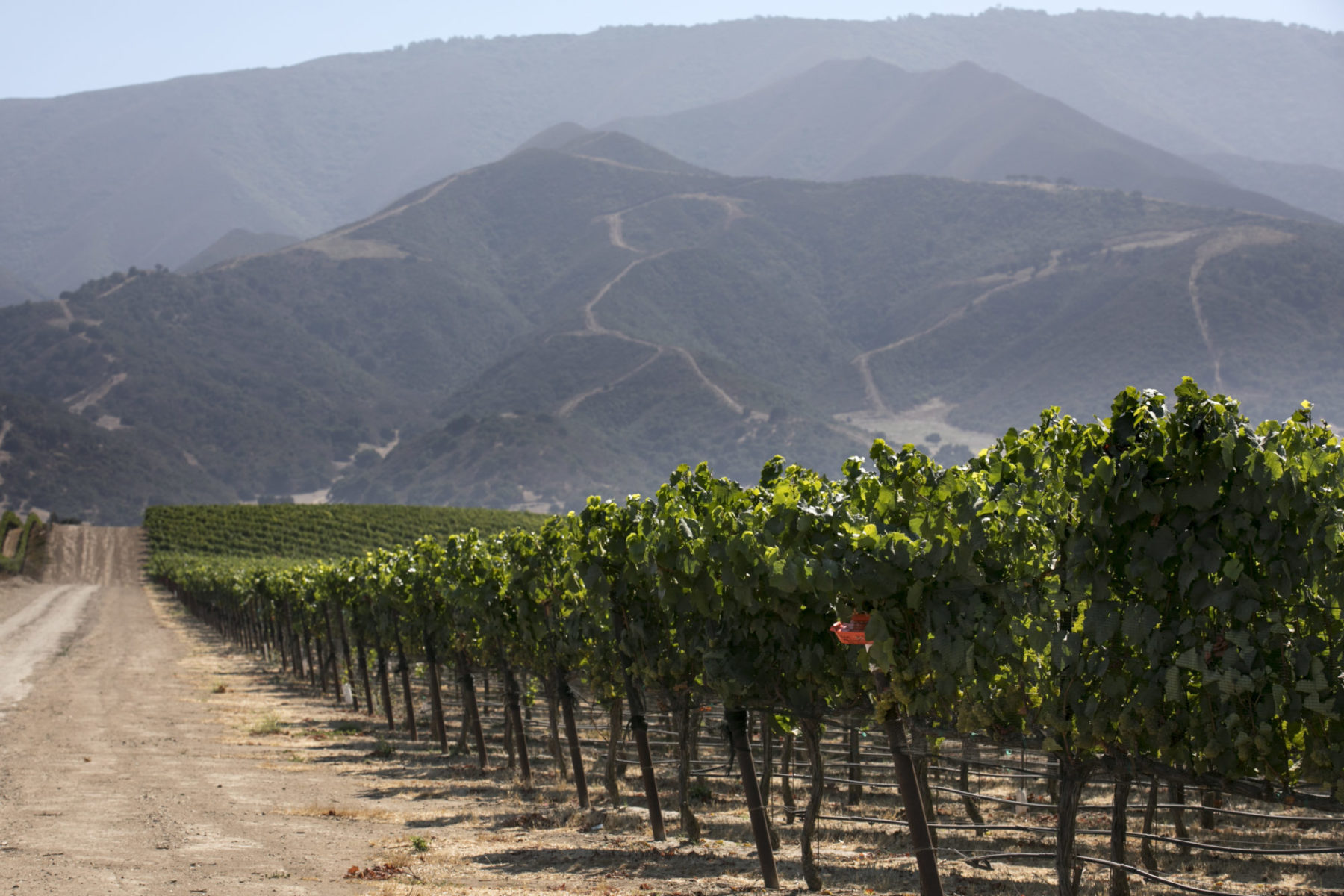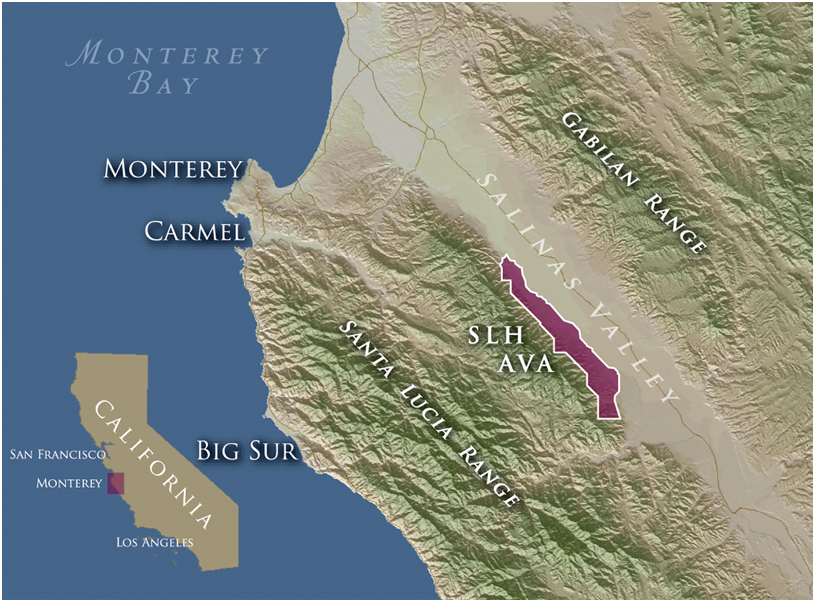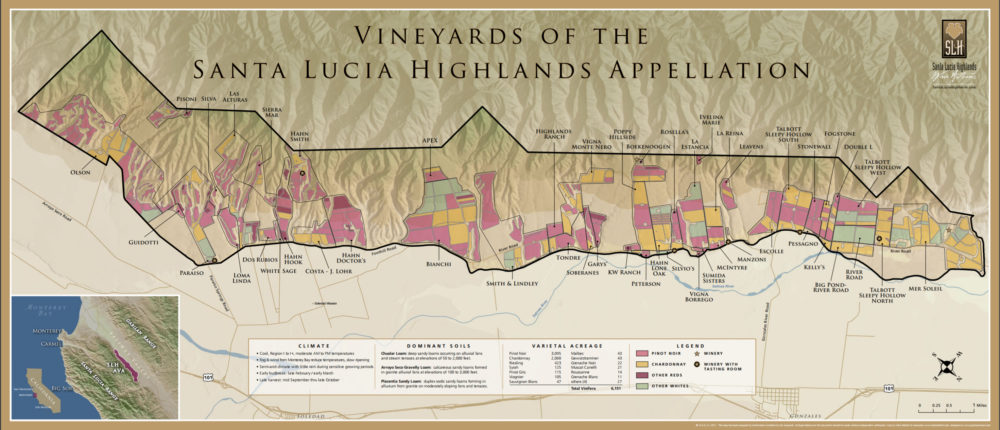
This report looks at the latest releases from the Santa Lucia Highlands, primarily the 2015s. Like throughout California, the 2015 Vintage was characterized by tiny yields due to dismal weather in the spring, a warm to hot growing season, and an early, compressed harvest. The wines are more elegant and fresh than the exuberant, fruit forward 2014s (and 2016s), yet shine for their balance and purity. A number of wines possess a Burgundian-like transparency and tension, and these are certainly going to appeal to the more European-Styled palates out there. The vintage as a whole is a step down over 2014 and 2013, yet this under the radar appellation has still produced a bevy of beautiful, elegant wines that consumers will love.
In short, this is another solid vintage for the Santa Lucia Highlands. However, due to the dismal yields, there’s not much wine to go around.
A Quick Look at Past Vintages:
The 2014 vintage was hot and dry and featured high yields, lots of wind and a cool, even growing season. The wines lead with their fruit and are already drinking nicely. While the top wines will evolve nicely on their balance, I suspect most are best enjoyed in their first decade of life. The 2013s are much more concentrated and structured, with terrific purity of fruit. They don’t have the upfront generosity or accessibility of the 2014s, yet will be longer lived. The 2012s can be thought up as a mix of 2013 and 2014 and have boatloads of fruit, as well as underlying structure. Numerous winemakers described 2012 as a “post-card vintage” and it was an even, sunny, stress-free vintage the yielded beautiful wines.
The Region:
The Santa Lucia Highlands is located south of Monterey Bay, on the western side of a mostly north-south running valley. This cool, windy region produces brilliant Chardonnays, Pinot Noirs and Syrahs, as well as a handful of Sauvignon Blancs and other cool climate white varieties.
The cool climate of the region is due largely to the proximity to Monterey Bay to the north, which causes the valley to be blanketed in a heavy fog most mornings and evenings. The farther south in the valley a vineyard lies, the longer it takes the fog to roll in and the sooner it leaves. This results in the northern sites closer to the bay seeing more moderate winter temperatures and slightly earlier bud break, and the more southernly sites seeing more sunlight hours and slightly higher temperatures during the growing season. In addition, the region has a number of great terroirs that show singular characters.
While plantings go back as far back as the 1790s, it wasn’t until Gary Pisoni and Gary Franscioni began planting vineyards in the 1980s and 1990s that the region started to receive more critical acclaim. There are roughly 6,000 acres under vine today, mostly consisting of small, diverse vineyards with varying exposures, altitude, and soil types.
*Images provided courtesy of the Santa Lucia Highlands Vintners Organization
The Wines
The vast majority of these wines were tasted at my office in Colorado, in September and October 2017. While the report focuses on the Santa Lucia Highlands, it includes numerous wines from Sonoma, Monterey, and Santa Barbara County.



